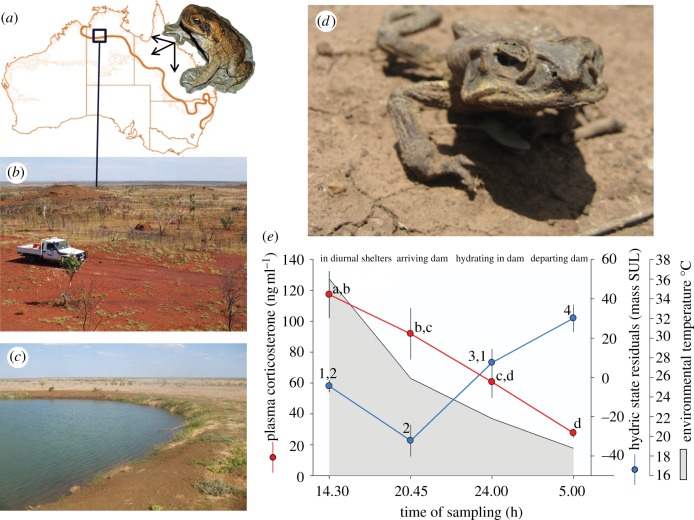Figure 1.
(a) Cane toads were introduced into north eastern Australia in 1935 and promptly underwent range expansion (arrows). Their current range front is depicted by the wavy boundary line. (b) Part of the current range front extends into the northern Tanami desert in Australia's Northern Territory where this study was conducted. (c) Here, during the dry season, toads aggregate around permanent natural and artificial water sources (e.g. dams) for survival. (d) The hot–dry season exposes the toad to strong selection from thermal and desiccation stress, and at this study site, it is possible to encounter toads that have died in nocturnal transit from their diurnal shelters to water sources. (e) During the hot–dry season toads experienced significant daily variation in their plasma corticosterone levels (red line) and hydric state (blue line, mass/snout-urostyle length (SUL)), both responses to hot ambient environmental temperatures. Each point represents the mean value and standard error of 10 individuals sampled at each time period. Post hoc differences are indicated by letters and numerals associated with sampling periods. Captions above graph depict the activities of toads at each sampling period.

